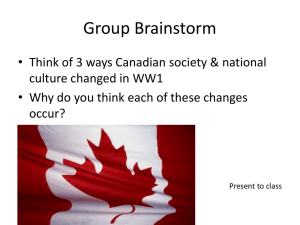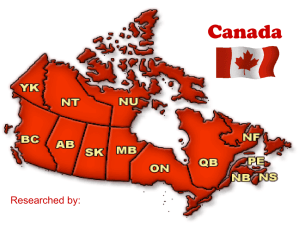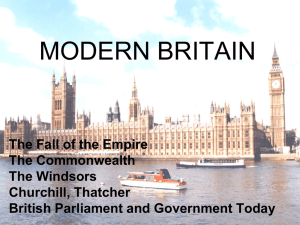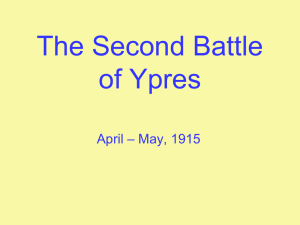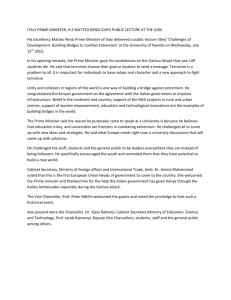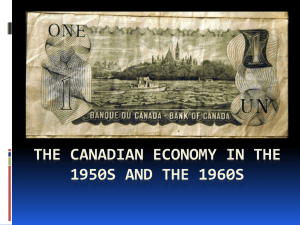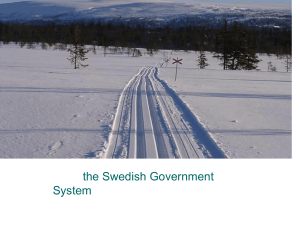PSCI 422 1
advertisement
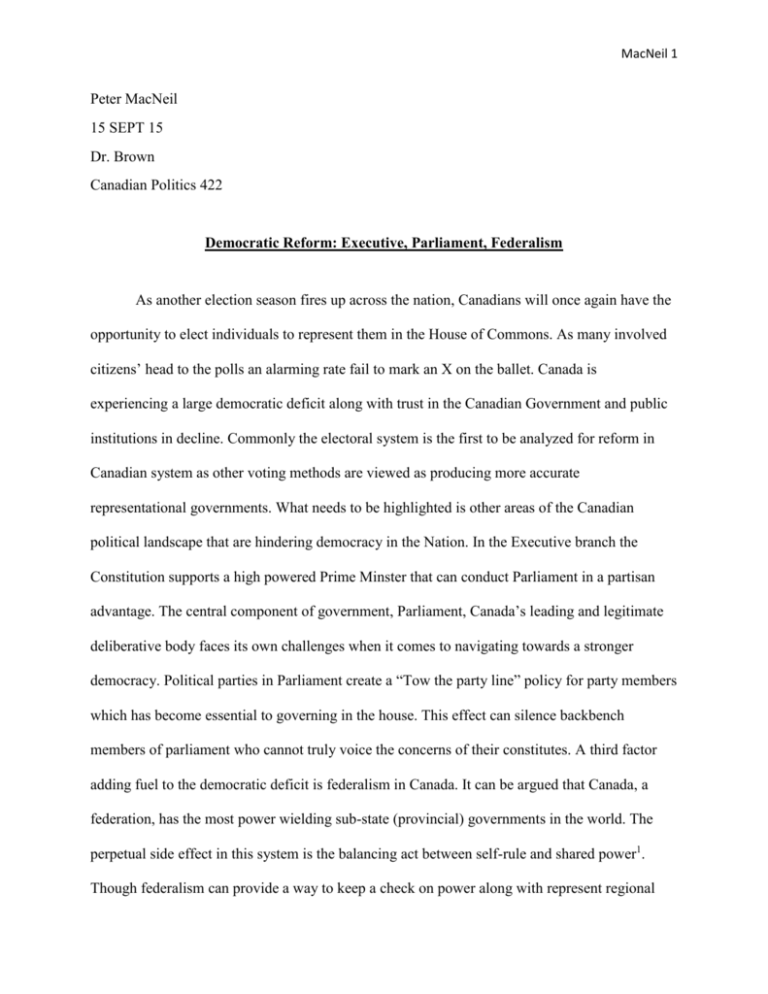
MacNeil 1 Peter MacNeil 15 SEPT 15 Dr. Brown Canadian Politics 422 Democratic Reform: Executive, Parliament, Federalism As another election season fires up across the nation, Canadians will once again have the opportunity to elect individuals to represent them in the House of Commons. As many involved citizens’ head to the polls an alarming rate fail to mark an X on the ballet. Canada is experiencing a large democratic deficit along with trust in the Canadian Government and public institutions in decline. Commonly the electoral system is the first to be analyzed for reform in Canadian system as other voting methods are viewed as producing more accurate representational governments. What needs to be highlighted is other areas of the Canadian political landscape that are hindering democracy in the Nation. In the Executive branch the Constitution supports a high powered Prime Minster that can conduct Parliament in a partisan advantage. The central component of government, Parliament, Canada’s leading and legitimate deliberative body faces its own challenges when it comes to navigating towards a stronger democracy. Political parties in Parliament create a “Tow the party line” policy for party members which has become essential to governing in the house. This effect can silence backbench members of parliament who cannot truly voice the concerns of their constitutes. A third factor adding fuel to the democratic deficit is federalism in Canada. It can be argued that Canada, a federation, has the most power wielding sub-state (provincial) governments in the world. The perpetual side effect in this system is the balancing act between self-rule and shared power1. Though federalism can provide a way to keep a check on power along with represent regional MacNeil 2 needs and concerns many fault lines also become apparent. The battle of fiscal needs for each province can slow policy making and create regional divides. To reform these elements of the Canadian political system it is the responsibility of the citizen to push for change and to let go of the fear of reopening the constitution which could result in a stronger democratic Canada. The future of this nation is in the command of one individual; an individual who happens to calls 24 Sussex Drive home. This person, of course, is the Prime Minister of Canada. In the 146 years this nation has been in existence there have been twenty-two citizens who have held the responsibility of leading Canada into the future. Being the Head of Government involves the task of making decisions that affect Canadians as well as providing leadership and direction for the government with support from the cabinet. Many view the powers attached to this role as essential for the Prime Minister to be able to advance policy in an effective manner However, at what point are decisions being made without the approval of the democratic institutions put in place to ensure the majority concurs?2 The power to call elections on their own terms and make appointments to different positions for partisan benefit is a common occurrence. The Prime Minister of Canada must have a certain level of power to move issues forward in Parliament but at what point is the nation becoming a “friendly dictatorship”3. Although, over time this power has become increasingly concentrated towards the Prime minister who has complete control over his/her cabinet along with making appointments to different areas of government not under his/her authority. A reoccurring issue raised in the readings is Canada has not developed a clear set of rules, guidelines or expectations on the use of these powers4. This concern of “unwritten rules” can even be applied to when a Prime Minister has lost the confidence of the House5. Nations such as Great Britain, New Zealand and Australia who also follow the Parliamentary system have set rubrics for how many days the Prime Minster has to summon Parliament. Where MacNeil 3 in Canada it remains at the Prime Minister’s discretion. Recently the Prime Minister’s power has been brought to light as Prime Minster Harper called the Federal Election early creating an 11 week election campaign. Many argue this is a tactic to drain other political parties of resources who are not as finically secure as the Conservative party6. What democracy allows a leader to bully other candidates to ensure they continue hold power? More voices should be raised in Canada as one person should not be able to wield that much power in a democracy. The elected members of Parliament are expected to “tow the party line” and express great party discipline when it comes to working in Parliament to ensure the government can work efficiently. But in reviewing the Canadian Cabinet at times, they are regarded more as “advisors to the Prime Minster then ministers”7. A concise summary of this happening in “Our institutions are melting the Canadian way” explains “If the Cabinet no longer functions as a collective decision making body, then Canada’s institutions no longer work the way they were designed”8. Another feat is how members are elected to Parliament as outline by Brian Tanguay in “Limits to Democratic Reform”. Though millions of Canadians are heading to the polls during an election to have their voice heard almost half are silenced due to the electoral system in place in Canada. Single Member Plurality also known as First Past the Post can be characterized as a race because the candidate with the most votes wins. This method of electing Canada’s government has proven to be ineffective in reflecting the nation’s population in Parliament.9 In Canada’s electoral history reform has taken place to improve this crucial structure in electing members to represent Canadians and changing the electoral system itself is the next plan of action due to curb the inconsistencies preventing a true democracy. The hierarchy of governments in the Canadian Federation is an idea of the past as Provincial Governments see themselves more as equals. In this theory governments are directed MacNeil 4 “inward rather than outward”10. An outcome of governing in this manner has resulted in fray intergovernmental relations affecting the people who vote these governments into power. Another point highlighted is the effect of concentrated support (regional parties-Bloc Quebecois) compared to a federal party where more issues to tackle affect their electoral success in the federal system. Competing regional interest continue to battle it out on the national stage which is not well equipped to handle such matters. The provinces in Canada have come to occupy a powerful position in Canada's governmental medium, both in fundamental power within confederation and in the procedure for developing public policy to convert that power into programs. The necessity of Canada to make amendments to the constitution is essential to democratic reform. The phobia of this task and the thought of two failed accords must be put in the past to ensure Canada can be labelled as a robust democratic nation. MacNeil 5 Bibliography Savoie, Donald J. Power : Where Is It? Montreal: McGill-Queen's University Press, 2010. Savoie, Donald. "Power at the Apex." Canadian Politics. 5th ed. Toronto: U of Toronto, 2009. 115-31. Print. Tanguay, A. Brian. "Canadian Political Parties in the Constituencies." Canadian Journal of Political Science 27, no. 3 (1994): 614-32.
